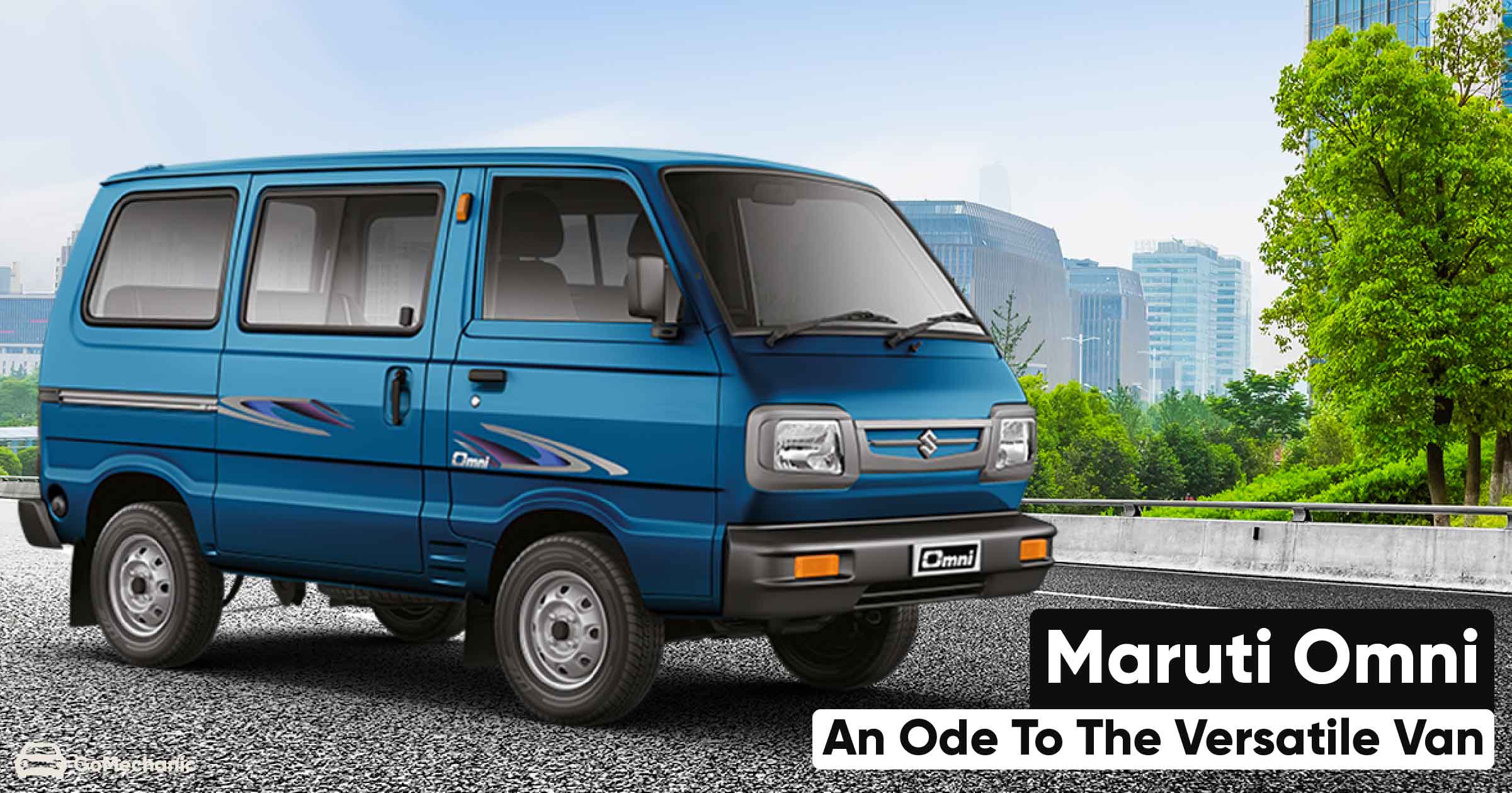The Maruti Suzuki Omni, often referred to simply as the “Omni Van,” holds a special place in the hearts of Indian families and small businesses. Launched in 1984, it has become a cultural icon over the decades, thanks to its compact size, unmatched utility, and affordability. Whether as a family vehicle, a goods carrier, an ambulance, or a school van, the Omni has worn many hats and served countless Indians with unwavering reliability.
In this blog, we’ll explore the history, design, features, variants, uses, and cultural impact of the Maruti Omni, while also looking at why it continues to evoke nostalgia even after its production stopped in 2019.
A Brief History of the Maruti Omni
The Omni was launched in India by Maruti Udyog (now Maruti Suzuki) in 1984, a year after the legendary Maruti 800 hit the roads. Originally known as the Maruti Van, it was based on the Suzuki Carry, a popular Japanese mini-van. The early models had a modest 796cc engine and a very basic design, but that simplicity was exactly what made the van so versatile.
Over the years, Maruti made subtle updates to the Omni, adding new variants and improving safety and design, but the overall silhouette remained the same. The vehicle retained its boxy shape, rear sliding doors, and mid-mounted engine throughout its production life.
Design and Engine: Simple and Functional
The Maruti Omni was never meant to be a flashy or luxurious vehicle. Its design prioritized function over form, which is why it became so popular in diverse applications. The flat-faced front, sliding doors, and tall cabin gave it a unique identity on Indian roads.
Dimensions and Space
- Length: 3370 mm
- Width: 1410 mm
- Height: 1640 mm
- Wheelbase: 1840 mm
Despite its compact size, the Omni was remarkably spacious on the inside. The tall roof and flat floor allowed for flexible seating and storage arrangements. You could configure it as a 5-seater, 8-seater, or use it as a cargo van with the rear seats removed.
Engine Specs
- Engine: 796cc, 3-cylinder, petrol
- Power Output: 34 hp
- Torque: 59 Nm
- Transmission: 4-speed manual
- Fuel Efficiency: Around 16-18 km/l
Though the Omni wasn’t powerful, it was extremely fuel-efficient and easy to maintain, making it ideal for cost-conscious users.
Variants and Uses
Over the years, Maruti Suzuki introduced several variants of the Omni to cater to different needs:
1. Omni Passenger Van
The most common version, used by families and as a taxi or shared auto in many Indian towns. It was known for its affordability and space.
2. Omni Cargo
Targeted at small businesses, this version came without rear seats and was used to transport goods. Bakers, shopkeepers, and delivery businesses found it extremely useful.
3. Omni Ambulance
Modified to serve as a basic ambulance, especially in rural areas. Its low cost and compact size made it suitable for narrow lanes and small clinics.
4. Omni School Van
Fitted with benches and bars for safety, this version became a common sight outside schools. It could accommodate many children despite its small size.
Why Was the Omni So Popular?
The success of the Omni can be attributed to several factors:
1. Versatility
Whether you needed to transport people or goods, the Omni could do it. From city streets to rural roads, it handled everything with ease.
2. Low Maintenance Cost
Simple mechanical components meant fewer breakdowns and cheap repairs. Mechanics across the country were familiar with its layout, making service easy.
3. High Fuel Efficiency
In an era when fuel prices were a major concern, the Omni’s impressive mileage helped users save money.
4. Easy to Drive
With its compact dimensions and light steering, it was a breeze to maneuver—even in crowded cities.
5. Affordability
Priced significantly lower than sedans or SUVs, the Omni gave access to motorized transport to lakhs of Indian families and entrepreneurs.
The Cultural Impact
The Omni was more than just a van—it was a part of Indian life. It featured in countless Bollywood movies, often in chase scenes or as the humble family car. From school picnics to temple visits and road trips, many Indians have fond childhood memories associated with the Omni.
In rural India, it became a lifeline—used for transporting people, animals, agricultural products, and even wedding processions. Its presence was almost mandatory in Indian towns, where narrow lanes and limited parking space demanded compact vehicles with high utility.
Safety Concerns and Discontinuation
Despite its popularity, the Omni faced criticism for its safety standards. With a cab-over design (driver sitting above the front axle and no engine in front), it offered minimal frontal crash protection. It lacked modern safety features like airbags, ABS, and crumple zones.
By 2019, stricter crash safety and emission norms (BS-VI) were introduced in India. Maruti Suzuki decided to discontinue the Omni rather than upgrade it to meet the new regulations, ending a 35-year-long production run.
Legacy and Successor
Though the Omni is no longer available, its spirit lives on. Its indirect successor in terms of functionality is the Maruti Suzuki Eeco, which offers better performance, more space, and improved safety.
However, for many Indians, no van can truly replace the Omni. It was a vehicle that democratized transport, supported small businesses, and became a reliable part of everyday life.
Second-Hand Market and Modification Culture
Even after its discontinuation, the Omni continues to thrive in the used car market. Many buyers look for well-maintained Omni vans for commercial or personal use. It’s also a favorite among vehicle modifiers, who convert it into camper vans, off-roaders, and even quirky showpieces.
Because of its lightweight build, it’s often used in motorsports like autocross and go-kart-style events with engine swaps and reinforced frames.
Conclusion: A Van that Drove Generations
The Maruti Suzuki Omni may not have had high-end features or modern technology, but it gave Indians something much more valuable—reliability, flexibility, and affordability. From bustling city streets to quiet village roads, it left a mark everywhere.
It wasn’t just a vehicle—it was a lifeline for families, a business partner for entrepreneurs, and a memory machine for generations. In a world rapidly moving toward electric vehicles and digital dashboards, the Omni reminds us of the beauty of simplicity.
As India drives forward into the future, the legacy of the Maruti Omni will always remain parked in a special corner of our hearts.










